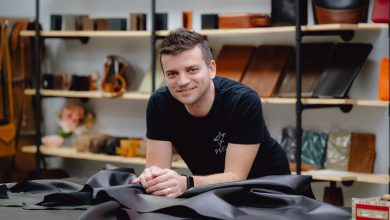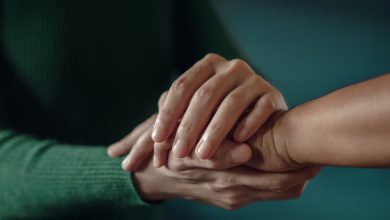The Artist Emily Mason’s Sunny Flatiron Studio Is for Sale

When she wasn’t painting in Vermont, the abstract artist Emily Mason could usually be found in her sunny studio in the heart of the Flatiron district, where she would retreat for hours each day. It was a routine she kept up there for four decades, mostly during the winter months.
“She was here seven days a week working on her paintings: She’d begin between 9 and 10, have lunch and maybe a nap, work some more, then go home and share the day with her husband,” said Steven Rose, her longtime assistant and now the executive director of the Emily Mason and Alice Trumbull Mason Foundation.

The abstract artist Emily Mason, who died in 2019, in her Flatiron studio in 1991. The property is on the market for $4.6 million.Credit…Tommy Naess
Ms. Mason, who died in December 2019 at her home in Brattleboro, Vt., was part of a family of distinguished artists. She was married to Wolf Kahn, the notable landscape painter who died in March 2020, and her mother was Alice Trumbull Mason, also an abstract painter. They were descendants of John Trumbull, best known for his historical paintings of the American Revolutionary War.
While Ms. Mason would typically spend spring and summer painting in Vermont, the Flatiron studio helped fuel her creativity, too, those close to her say. It was also where she might fine-tune her trademark colorful works and explore different mediums, with the help of the abundant light pouring into the space.
The family is now putting the co-op apartment up for sale. The asking price is $4.6 million, according to the listing broker, Kathleen M. Sloane of Brown Harris Stevens; monthly maintenance is $6,415.
In a 2018 interview with the magazine Western Art & Architecture, Ms. Mason noted how it was “important to balance city life with experiencing nature.”
“Winter in the city is the time for the fermentation of ideas,” she said. “Summer is my time to carry them out.”
Ms. Mason, whose artwork has appeared in numerous galleries around the country, employed vibrant colors in a free-form fashion, generally in oils. By contrast, the paintings of her mother, a pioneer in modern abstraction, often featured quasi-geometrical forms, at least in her later years.
Ms. Mason bought the Flatiron studio, a loft encompassing the top floor of 32-34 West 20th Street, in 1978, paying $250,000. “My aunt — my dad’s sister — loaned her some of the money, and she did it on her own, which was a bold move for a female artist in the ’70s,” said Melany Kahn, one of her two daughters.
She and her older sister, Cecily Kahn, an abstract painter based in Maine (and married to the artist David Kapp), had considered keeping the loft after Ms. Mason’s death and preserving it to house the archives of their mother and grandmother’s numerous works, but they have since found a more suitable space in Brooklyn specifically designed for art storage.
“Since neither my sister nor I live in New York City anymore, it’s just time to find someone who can reimagine it the way my mom did,” said Melany Kahn, a family mediator and writer who lives in New Hampshire.
The full-floor loft totals just over 4,000 square feet, which includes a separate 430-square-foot studio apartment that Ms. Mason created early on and had rented out to friends, among them, Mr. Rose, to help offset the monthly carrying costs.
Other than carving out a separate rental unit and creating rooms in the main section, the apartment has remained relatively untouched over the years.
It still has its soaring 11- and 12-foot ceilings, two skylights and original arched windows that provide views of neighboring rooftops and building cornices. There are also exposed plaster columns and pipes, and the hardwood floors ubiquitous to the building’s prewar days as a factory.
The 11-story, neo-Renaissance structure, erected in the early 1900s between Fifth Avenue and Avenue of the Americas in the Ladies’ Mile Historic District, was once used to manufacture garters and shirtwaists. The 15-unit building was converted to a co-op in 1978.
“This is a loft and an opportunity,” Ms. Sloane, the broker, said. “It is a space that can be configured in whatever way the buyer and building agree it can be.”
Right now, it’s configured with one full bathroom and galley kitchen in the studio apartment, known as 11B. The main space, 11A, contains a half bath, kitchen and dining area, and three large rooms that were used for painting, storage and as offices, plus a freight elevator.
Ms. Mason painted mainly in the north section of the loft, which has a skylight and windows overlooking 20th Street, according to Mr. Rose. She kept a small greenhouse with plants and orchids in a south-facing back room. The three main rooms also held custom-designed storage racks.
“This space is very meditative — curated for her mind,” Ms. Kahn said.
Some of Ms. Mason’s various art materials and the storage racks and shelving still remain, though most, if not all, of her works have been removed.
After her death, Mr. Rose said, “we were still finding paintings stashed away.”
Emily Mason’s work was recently shown at Art Basel in Miami Beach, and Alice Trumbull Mason at Washburn Gallery in New York.
For weekly email updates on residential real estate news, sign up here. Follow us on Twitter: @nytrealestate.





